
In September of 2024, Google announced that the enhanced CPC bid strategy would be going away. As of the writing of this post, you can still use ECPC, but it’s getting phased out of most accounts and is slated to be a thing of the past come March of 2025.
Instead of relying on ECPC, which will soon no longer be an option, you could transform your strategy to align with manual CPC bidding.
I’ve been running paid search ads since 2010 and have used every bid strategy under the sun. I have a personal fondness for manual CPC and think that any marketer who uses it for any period of time will become a better practitioner. But on the flip side, I see lots of accounts leveraging Manual CPC but not actually optimizing it the way it should be. Just like everything else in paid search, “set it and forget it” isn’t really a great idea if you want to see results.
In this post, I’m going to walk through some common mistakes (in no particular order) I see when people use Manual CPC bidding and talk about what your bid management should look like.
Contents
- Not knowing when to use manual CPC bidding
- Irregular performance reviews
- Incorrect lookback windows
- Poor degrees of bid adjustment
- Not conducting long-term performance reviews
- Not leveraging all bid modifiers
Mistakes to avoid when managing manual CPC Google Ads bidding
Here are the top manual CPC bidding mistakes advertisers should be wary of in Google Ads.
🚨 Is manual bidding the right strategy for your campaigns? Find out with a free, instant account report using our Google Ads Grader!
1. Not knowing when to use manual CPC bidding
With ECPC going away, advertisers will have to choose whether they should now use automated or manual bidding.


One of Google’s suggestions is to test out automated smart bidding, which is a good idea. If a machine can do a good job for you and save some time, why not leverage it?
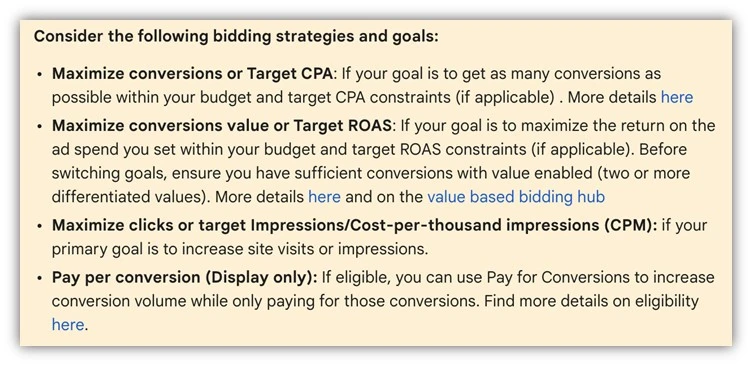

While the majority of advertisers use automated smart bidding strategies, this post is for those folks who don’t see good results with automated bidding for one reason or another. Maybe you’re just starting a new campaign and don’t have any performance history to go off of. Perhaps you have low conversion volume and Google’s machine learning can never really detect any patterns, or you’re low on budget and need to find a way to keep costs low. These are all examples of times you could try manual CPC bidding in Google Ads.
No matter the reason, if you are going to be using manual CPC, this post is for you.
2. Irregular performance reviews
One of the first problems we see with most accounts using manual CPC is that they don’t have a regular review process. It seems like every once in a while it crosses the manager’s mind to check bids, but sometimes the next review is a week later, other times it’s a month later, then maybe a couple days.
Without a regular cadence of reviews, it’s hard to consistently see better performance from your ads.
The change history you see below isn’t uncommon when we review a manual CPC campaign.
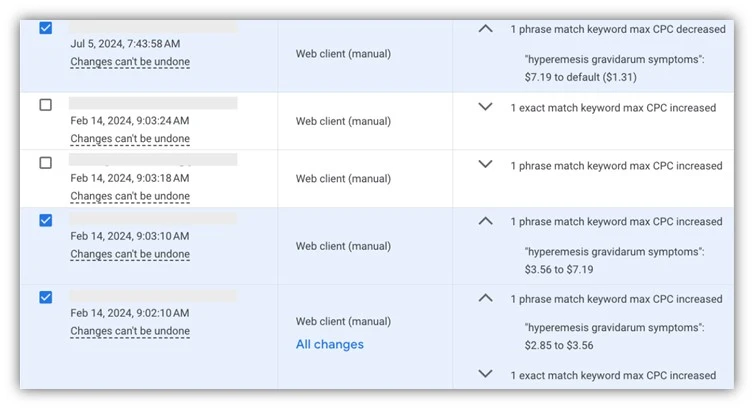

Looking from the bottom up in the left-hand column, changes for this keyword were made twice on February 14th, then only again on July 5th.
However, I’m talking about the timing of reviews, not changes. Not every keyword needs a bid change on every review. It could be very well likely that this keyword only needed changing twice in a handful of months.
The reason this stands out is due to the degree of changes (which we’ll get to in a little bit). If the CPC was pulled down drastically from $7.19 to $1.31, that tells me that it probably wasn’t performing well for all those months between February and July and that more regular reviews could have helped keep this keyword more profitable.
Having a regimented calendar of changes makes it more likely you’ll see good performance and makes it easier to follow since it’s already laid out.
Here’s an example of a cadence that I like to do:
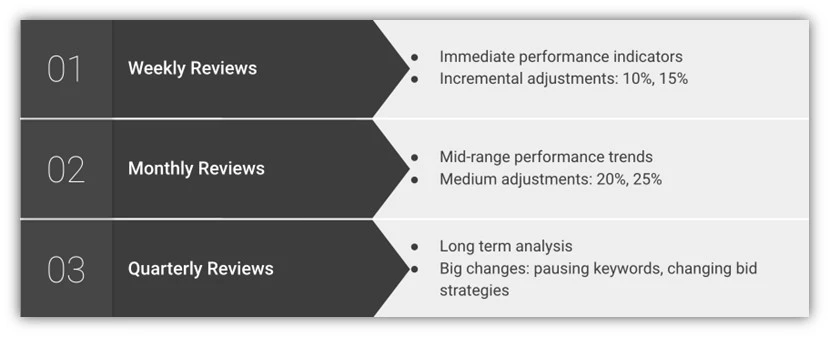

When conducting these reviews, I’m focusing on a few main areas:
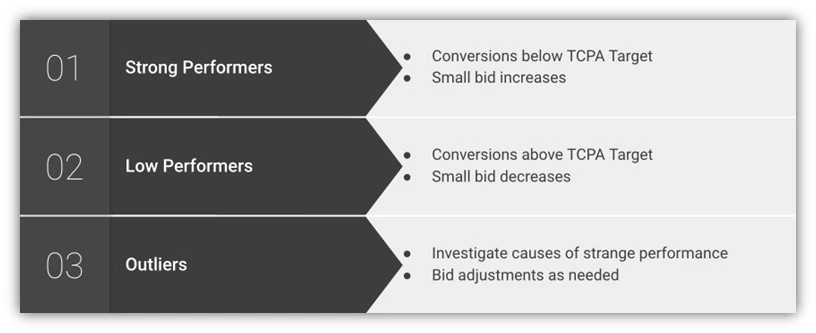

Let’s start with an example of a weekly review and say my target CPA is $100.
Every Monday, I’ll log into an account and look at the keyword performance for the last week. There, I’m looking for the three categories above:
- Strong Performers: Keywords with CPAs below $100.
- Low Performers: Converting keywords with CPA over $100.
- Outliers: Keywords with extremely high CPAs (likely 3x the CPA target) or high spend and no conversions.
I’ll then adjust the keyword bids based on the performance I’m seeing and make any larger changes to the outlier keywords to try and bring them back in line. That could include pulling back on budget, adding negative keywords, or many other things.
The benefit of a process like this is twofold. It’s easy to keep a weekly check-in when the task falls on the same day of the week. In my example, that was Monday. Secondly, keywords are being regularly reviewed and adjusted to hit performance goals.
But you’ll notice that weekly isn’t the only cadence I have. I also have line items for monthly and quarterly reviews.
These can also be done on the same Monday, but the lookback window and degree of your bid changes will change compared to the weekly review. Let’s take each of these separately as they’re two more issues I regularly see with manual CPC campaigns.
3. Incorrect lookback windows
The challenge when reviewing performance regularly is to always make sure you have the right lookback window in use.
If you were to launch a keyword on July 15, and then have weekly check-ins based on the data since launch, your timeline might look like the image below.
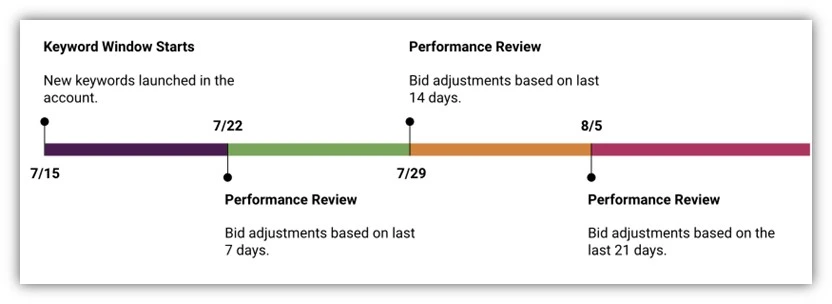

The problem is, when you make adjustments on those windows, it’s actually going to look a little more like the following, with the performance data from the first week being included in 3 different rounds of bid adjustments.
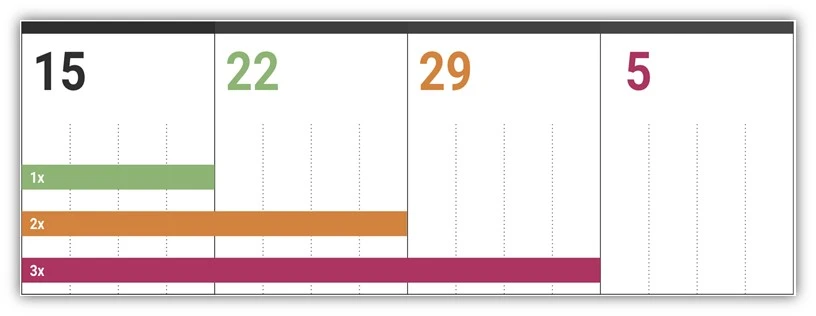

Instead, we should be looking for these short-term weekly reviews to be mutually exclusive of each other. Once you make your bid changes on July 22 based on the first week of data, you shouldn’t be including that data in your weekly reviews (until we get to longer-term analysis). The bid changes on 7/29 should only include the performance data from July 22 on so you’re only evaluating how the current bids perform compared to your targets.
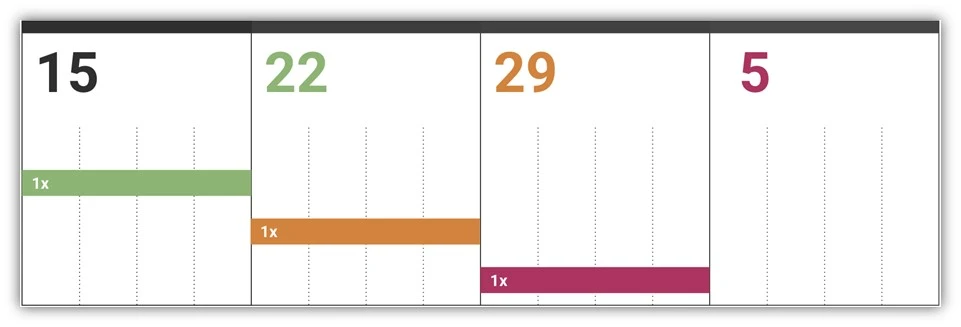

This way, on a weekly basis, you’re moving your keyword bids up and down based on how a keyword is performing with that given bid and not discounting or enhancing its performance with past data.
The easiest rule of thumb: look back to when you did the last review. Weekly looks back a week. Monthly looks back a month. And so on.
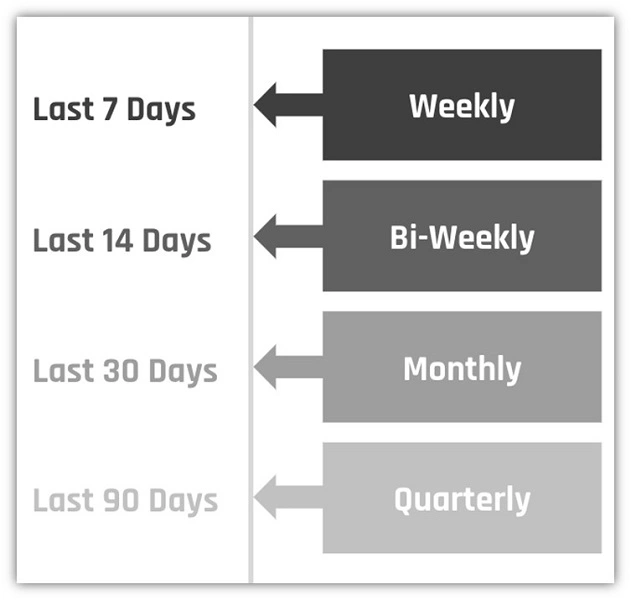

Technically, the monthly and quarterly reviews will overlap with the weekly changes you’re making, but that brings us to the next mistake we see.
4. Poor degrees of bid adjustment
Let’s quickly revisit the example we started off this post with.
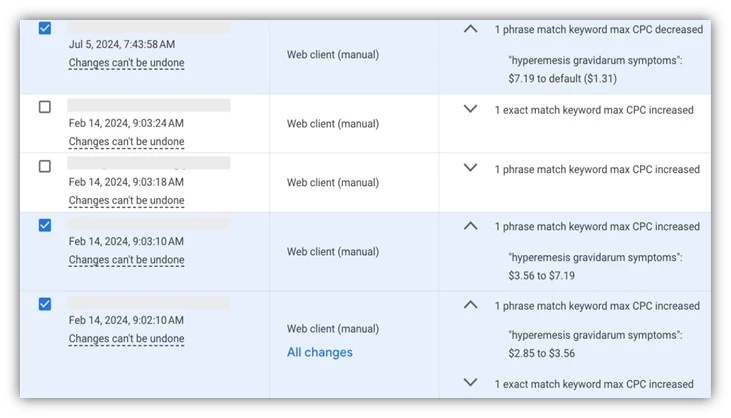

The two bottom line items are for February 14th and the bid went from $2.85 to $7.19. That’s a 152% increase in one day. On the way back down, going from $7.19 to $1.31 is an 82% decrease. Personally, those swings are just too large for me. I’d like to see something a little more conservative.
Quick side note: I’ve always been a fan of changing bids by percentage rather than a flat amount. If your bids are $10, then it might make sense to raise or lower the bid by $1 based on recent performance. But for someone only bidding $1, another $1 one way or the other could either be a doubling or flatlining of the bid. Percentages are always your best friend with this as they scale with you and can fit into any account.
Let’s take a look at the following image again. We have review layers for weekly, monthly, and quarterly, and as I mentioned above, monthly and quarterly reviews will overlap with weekly adjustments, but the degrees of changes here should be relative to the date range we’re looking at.
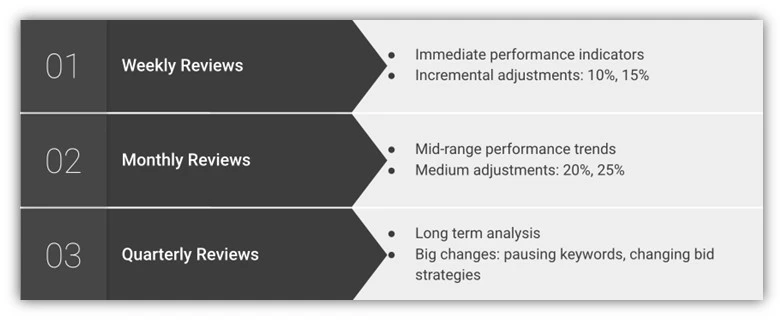

For weekly changes, I like to keep my bid changes small. The date range is smaller, so the changes should reflect that. Typically, if performance is close-ish to the target CPA, I’ll adjust by 10% and if something looks really bad or good in a given week (say 2x the CPA target or only at half), then I’ll make a 15% adjustment.
As we get into longer time frames like a monthly review, my percentage of bid changes grows. Now I’m looking at 20% to 25%.
Same thing with quarterly changes, my bid changes might be an additional 25% – 40% or I might even think about pausing a keyword altogether.
Effectively, these monthly and quarterly bid changes can help give you insights into longer-term performance and will allow you an opportunity to get more or less aggressive on a keyword as compared to the weekly reviews.
When doing these longer reviews, don’t forget to use your best judgment. Rules make it easy to do the work, but if you have a hesitation, explore it. If a keyword has converted but has a CPA that’s 2.5x your target, maybe check to see if it’s trending in the right direction with your weekly changes before pausing it or giving it a big bid cut. That brings us to the next Google Ads manual bidding mistake.
💸 Looking to get the most bang for your buck in Google Ads? Download our free guide to 6 easy ways to save money in Google Ads!
5. Not conducting long-term performance reviews
In addition to the weekly, monthly, and quarterly reviews, it’s very important to check back to even longer date ranges. There are two sides to this longer review.
First, even with the shorter time frame reviews, you could be missing out on the overall impact of a keyword. With long-term reviews like half-year and annual lookback windows, you can see the weight each keyword carries in your account. Does one keyword account for more than 20% of the conversions? Is one category of keywords dragging up the CPA because they’re higher on average? Without looking at longer ranges, you may not see those trends.
Second, while the shorter time frames above help with keywords that are likely to have decent volume and have some conversion performance, there’s a category of keywords that usually is only discovered with these longer-term reviews: the silent thief.
Here’s the data for a certain keyword for the last week:


The CPA target for this account is $100, so even though it hasn’t converted, it’s still under that threshold and just 1 conversion would make it profitable, so we don’t make any changes.
Here’s the last month’s worth of data:


Now we’re about 2x the CPA target on spend, so we lower the bid by 25% and set it on its way.
Here’s a quarter’s worth of data:


Again, now we’re in 3x the CPA range so based on our rules, we might lower the keyword bid another 25-40% and see how it goes. At this stage, we’re also going to check for bigger changes. Can we add in some new negative keywords? Should we test some new ad copy? Is there a different landing page we could send these folks to? How can you get this term back on track?
But now we’re at a 6-month review:


And still nothing. Once we’ve hit this point, we’re at 4x the CPA target, and all the bid lowering and strategy changes don’t seem to be helping. Without this 6 month review, we’re left to look at only a quarterly basis, which might only show us a 3x CPA spend with no conversions and we may continue optimizing when in reality, this keyword just isn’t working. At this 6 month point, I was ready to pause.
6. Not leveraging all bid modifiers
While all this might sound like a lot of work, you’re not off the hook yet. We’ve just been talking about keywords, but one of the other mistakes I see with manual CPC is that most advertisers don’t take advantage of all the other bid modifiers available in Google Ads.
Unlike all the Smart Bidding strategies, manual CPC is compatible with all the bid modifiers including audiences, devices, demographics, ad scheduling, and more.


Now, I’m not suggesting you review all of these bid modifiers on a weekly basis. Likely monthly and quarterly reviews will suffice for these since more data will need to accrue, but they should absolutely be part of your regular process.
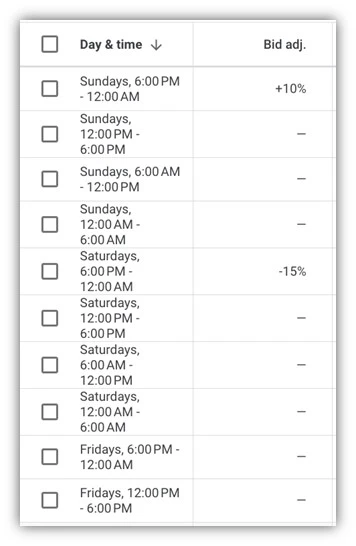

Each will be in a different place, but bid modifiers will always look like the image above. You’ll be able to add a percentage increase or decrease to your target layer to decide if you want to get more or less aggressive in that segment. Just like with keywords, these percentages should all be based on performance.
Turn these manual bidding mistakes into
Manual CPC bidding takes quite a bit of time to do properly, but I think it’s a great solution for campaigns that need a little more attention and don’t see good results from smart bidding strategies. Make a schedule, keep to it, and you’ll get the most from manual CPC. For more help managing your search ad bidding strategies, see how our solutions can optimize your bids and maximize campaign results.







